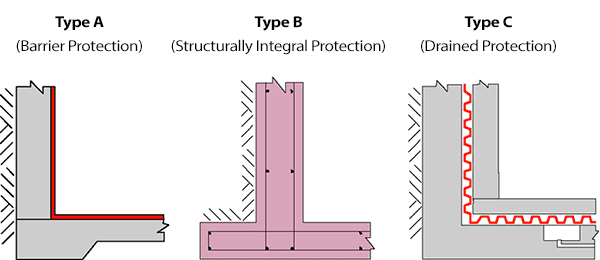What are the three types of basement waterproofing?
Basements are an important part of any home, but they are also one of the most vulnerable areas when it comes to water damage. Water infiltration into your basement can cause serious damage, from structural damage to mold and mildew growth, which can pose serious health hazards. Therefore, it’s essential to protect your basement from water damage, and one of the most effective ways to do that is through basement waterproofing.
Expert Basement waterproofing company providing all the best foundation repair services at affordable prices without compromising on quality.
Several signs indicate you may need basement waterproofing:
- Visible Water Damage: If you see water stains on the walls or floor, or if there is visible mold growth, it’s a sign that water is entering your basement.
- Musty Odors: If you notice a musty smell in your basement, it could be a sign of excess moisture, which can lead to mold growth.
- Cracks in Foundation Walls: If you notice cracks in the walls or floor of your basement, it’s an indication of foundation damage that can lead to water infiltration.
- Efflorescence: Efflorescence is a white, powdery substance that appears on concrete surfaces. It’s caused by water seeping through the concrete and depositing salts on the surface.
- High Humidity: If your basement feels damp or humid, it could be a sign of excess moisture, which can lead to mold growth.
Basement waterproofing is the process of preventing water from entering your basement or protecting it from water damage. There are three main types of basement waterproofing methods, each with its advantages and disadvantages. Let’s take a closer look at them.

1: Interior Basement Waterproofing
Interior basement waterproofing is the most common method of waterproofing. It involves installing an interior drainage system and a sump pump to collect and remove water that enters the basement. Interior basement waterproofing is an effective solution for basements that experience occasional water intrusion.
The process involves excavating a small trench around the perimeter of the basement and installing a drainage system to collect water that seeps into the basement. The collected water is then diverted to a sump pump, which pumps the water out of the basement and away from the foundation. Interior basement waterproofing is less expensive than exterior waterproofing, and it’s less disruptive to your landscaping.
Advantages of Interior Basement Waterproofing:
- Cost-effective compared to exterior waterproofing.
- Less disruptive to landscaping and exterior of the home.
- Can be installed quickly, usually within a day or two.
- Can be effective for minor water intrusion problems.
- Interior waterproofing systems can also improve indoor air quality by reducing moisture and preventing mold growth.
Disadvantages of Interior Basement Waterproofing:
- Does not address the underlying cause of water intrusion, which can lead to further damage.
- Interior waterproofing systems are not effective for severe water intrusion problems.
- Can only collect water after it has entered the basement, which can result in damage to personal belongings.
- Sump pumps require maintenance and can fail, resulting in water damage.
- The installation process can be disruptive and messy, as it involves excavation and installation of a drainage system.
Exterior Basement Waterproofing
Exterior basement waterproofing is a more complex and expensive solution, but it’s also the most effective. It involves excavating the perimeter of the foundation and applying a waterproofing membrane or coating to the exterior walls. Exterior basement waterproofing is necessary when the foundation is severely damaged or when the water table is high.
The process involves excavating the soil around the foundation, applying a waterproofing membrane or coating to the exterior walls, and installing a drainage system to collect and divert water away from the foundation. Exterior basement waterproofing is more expensive than interior waterproofing, and it’s more disruptive to your landscaping. However, it’s a long-term solution that can prevent water from entering your basement for many years.
Advantages of exterior basement waterproofing:
- Provides a long-term solution to water infiltration issues.
- Prevents structural damage to the foundation and walls.
- Increases the overall value of the property.
- Improves indoor air quality by reducing mold and mildew growth.
- Protects the basement from flooding during heavy rainfall.
Disadvantages of exterior basement waterproofing:
- More expensive than interior waterproofing.
- Requires excavation, which can be disruptive to the landscaping.
- Weather conditions can affect the installation process.
- May require additional repairs, such as landscaping or concrete work.
- Not recommended for all types of foundations, such as those with shallow footings or limited access.
Crack Injection
Crack injection is a specialized waterproofing solution that’s used to seal cracks in concrete walls or floors. Cracks can occur due to foundation settling, shrinkage, or expansion. When left unsealed, cracks can allow water to seep into the basement, leading to structural damage and mold growth.
The process involves injecting a waterproofing resin into the cracks to seal them and prevent water from entering the basement. Crack injection is a cost-effective solution for minor cracks, but it’s not recommended for larger cracks or structural damage.
Advantages of Crack Injection:
- Cost-effective solution for minor cracks
- Quick and easy installation process
- Provides a long-lasting solution for sealing cracks
- Can prevent further water damage and mold growth
- Does not require excavation or major construction work
Disadvantages of Crack Injection:
- Not suitable for large or structural cracks
- May not be effective for cracks caused by ongoing foundation movement
- Requires a professional with specialized equipment and training
- May not provide a complete waterproofing solution for the entire basement
- The injection material may discolor over time and require reapplication.
Conclusion
Basement waterproofing is an essential aspect of protecting your home from water damage. The three main types of basement waterproofing methods are interior waterproofing, exterior waterproofing, and crack injection. Each method has its advantages and disadvantages, and the best solution for your home will depend on your specific situation.
It’s recommended to consult with foundation repair companies near me and you will find expert basement waterproofing to assess the situation and provide the best solution to protect your home. In addition, consider hiring reliable discount roofing services to address any roofing issues that could lead to water infiltration into your basement. Protecting your home from water damage is critical to ensure the safety and comfort of your family.

